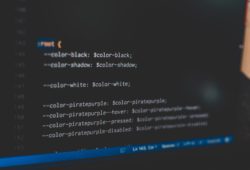Collection Factory Methods in Java 9 with Code Samples
One of the new features of Java 9 is the Java 9 Collection factory methods. These allow you to directly create a Collection object with a list of values. In this blog post, I will be explaining this feature in detail.
Table Of Contents
Before Java 9
Suppose you want to create a List of String values. Prior to Java 9, you had to write code like the following:
List<String> inputList = new ArrayList<String>();
inputList.add("One");
inputList.add("Five");
inputList.add("Ten");
inputList.add("Twenty");
The above code snippet involves invoking the List.add method several times and does not look very clean. Java 9 introduced a new method that allows directly adding a list of elements into a Collection without having to invoke the add method several times.
Java 9 way
Java 9 introduced a factory method called of on the Collection interfaces. This method is present on all the Collection interfaces i.e. List, Set and Map. It returns a Collection containing an arbitrary number of elements. So this can be used to create the collection with a list of elements.
For example, suppose you want to create a List of String values. You can write code similar to the following:
List<String> inputList = List.of("One","Five","Ten","Twenty");
This code is much cleaner than repeatedly adding the elements in the List via the add method. You can create the List in a single line of code.
There are several overloaded versions of the of method. For example the List.of() method can be used to create an empty list. The List.of(E e) can be used to create a List with a single element. You can refer to the API documentation for the complete list of methods.
Note only List, the of method is present on the Set and Map interfaces as well. So you can create a Set or Map of elements using the of method.
Consider the following code snippet:
Set<String> inputSet = Set.of("One","Five","Ten","Twenty");
So this returns a Set with the specified values.
So also the following code snippet create a Map:
Map<String, String> map = Map.of("1","One", "5", "Five","10","Ten","20","Twenty");
of method vs Arrays.asList
Java also provides the Arrays.asList method which can be used to create a List in a single line of code. So consider the following code snippet:
List<String> inputList = Arrays.asList("One","Five","Ten","Twenty");
So this code is quite similar to the one written using the of method. Also, The Arrays.asList has been around since Java 5. So why was the need for the of method in Java 9?
There are a couple of differences between the Arrays.asList and the of method.
You can use the Of method to generate a Set or Map too
As demonstrated above, you can use the Arrays.asList method only if you want to generate a List. The of method on the other hand is present on the Set and Map interfaces as well. So in addition to List, you can use it to create a Set or Map too.
The of method does not affect the input array
Consider the following code snippet:
String array[] = {"One","Five","Ten","Twenty"};
List<String> inputList = Arrays.asList(array);
array[2] = "Eight";
System.out.println("InputList is "+inputList);
So here we are setting the element at position 2 in the array to a new value. This also modifies the List. So this code will print the following output:
InputList is [One, Five, Eight, Twenty]
However, this is not true about the of method. So consider the following code snippet:
String array[] = {"One","Five","Ten","Twenty"};
List<String> inputList = List.of(array);
array[2] = "Eight";
System.out.println("InputList is "+inputList);
So this will print the following output:
InputList is [One, Five, Ten, Twenty]
So this means that the List is not affected when the array is changed.
List.of method does not allow null elements
Consider the following code snippet:
List<String> inputList = Arrays.asList("One","Five",null,"Twenty");
System.out.println("InputList is "+inputList);
So here, a null value is specified in the Array.asList method. When you run this code, it prints the following output:
InputList is [One, Five, null, Twenty]
The List.of method, on the other hand, does not permit null values. So consider the following code snippet:
List<String> inputList = List.of("One","Five",null,"Twenty");
System.out.println("InputList is "+inputList);
When you run this code, a NullPointerException occurs as follows:
Exception in thread "main" java.lang.NullPointerException at java.base/java.util.Objects.requireNonNull(Unknown Source) at java.base/java.util.ImmutableCollections$ListN.<init>(Unknown Source) at java.base/java.util.List.of(Unknown Source) at leanjava.java9.CollectionsFactoryMethodsDemo.main(CollectionsFactoryMethodsDemo.java:11)
Conclusion
So, in this article, we learned about Java 9 Collection Factory Methods. We understood how to use them and how they work.

